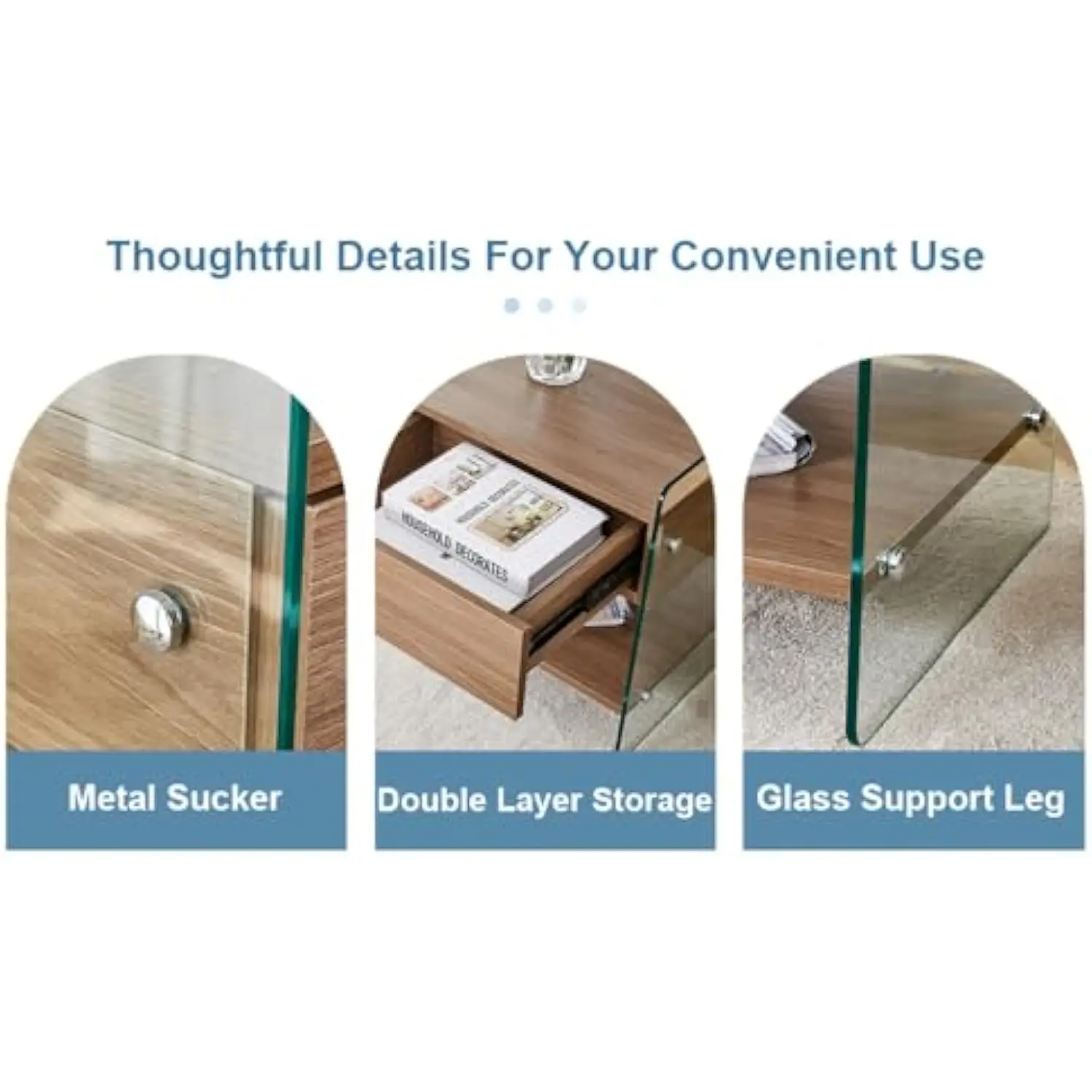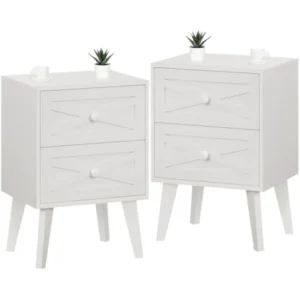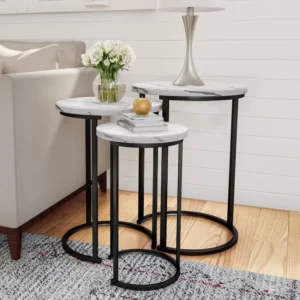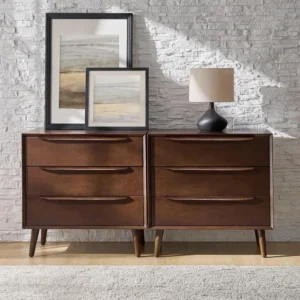The Unique Appeal of Glass Coffee Tables: A Centerpiece Canvas
Glass coffee tables are more than just functional furniture pieces—they’re versatile decorative canvases that can transform your living space. Unlike solid tables, their transparent nature creates a sense of visual spaciousness and lightness, making them perfect for smaller rooms or areas where you want to maintain an open, airy feel.
One of the most captivating qualities of glass tables is how they interact with light. They reflect and amplify the illumination in a room, creating a brighter, more dynamic space. This reflective quality can make your room appear larger and more vibrant, especially in areas with natural lighting.
What makes glass coffee tables truly special is their chameleon-like ability to complement virtually any design aesthetic:
- They pair beautifully with modern minimalist decor
- They add elegant contrast to rustic or traditional spaces
- They enhance contemporary designs with their clean lines
- They provide a sophisticated foundation for eclectic styling
However, their transparency presents unique styling challenges. Since glass tables are visible from all angles and their see-through nature puts everything on display, they require more thoughtful decoration than their opaque counterparts. Every item placed on the surface becomes part of a 360-degree visual experience, making intentional styling essential.
Whether you have a frameless float glass table, one with a sleek metal frame, or a design featuring wooden supports, understanding glass top coffee table ideas will help you make the most of this versatile furniture piece. For those looking to add a new statement piece to their living room, exploring mid-century modern glass top coffee tables offers numerous stylish options that combine form and function.
Essential Styling Principles: Mastering the Fundamentals
Before diving into specific decor elements, let’s establish the fundamental principles that will guide your glass coffee table styling. These concepts will help you create balanced, visually appealing arrangements regardless of your personal style.
The Rule of Three
– Odd numbers of items (especially three) create natural visual harmony
– Group objects in triangular arrangements for balanced composition
– Use this principle for small groupings within larger arrangementsHeight Variation
– Include items of different heights to create visual interest
– Aim for low, medium, and tall elements in your arrangement
– Avoid blocking sightlines across the room with overly tall itemsScale and Proportion
– Match decor size to your table dimensions (larger tables need bigger or more items)
– Consider the size of your room when selecting decor pieces
– Ensure decorative items don’t overwhelm the table or appear too smallVisual Weight Distribution
– Balance heavier-looking items with lighter elements
– Distribute visual weight evenly across the table surface
– Use color and material to create balance (dark/light, rough/smooth)Negative Space
– Allow for empty areas—not every inch needs decoration
– Create visual breathing room between grouped items
– Remember that with glass, the floor beneath is part of the visual experienceColor Theory Basics
– Limit your palette to 2-3 main colors for cohesion
– Consider how colors will reflect on the glass surface
– Use the table’s frame color as a guide for complementary tonesTransparency Considerations
– Select items that look interesting from all angles
– Be mindful of how items appear from beneath the glass
– Use the transparency to create layered visual effects
Mastering styling glass top coffee table techniques requires understanding these principles and applying them thoughtfully. As you experiment with different arrangements, you’ll develop an intuitive sense of what works for your specific table and space.
The Essential Decorator’s Toolkit: Perfect Elements for Glass Tables
Certain decorative elements work particularly well with glass coffee tables, enhancing their transparent beauty while adding character and warmth. Think of these items as your styling building blocks that can be mixed and matched to create countless arrangements.
Glass tables benefit from a thoughtful combination of:
- Trays and surfaces that define areas and protect the glass
- Books that add color, height, and personality
- Botanical elements that introduce softness and life
- Sculptural objects that create visual interest and artistic flair
- Ambient elements like candles that enhance the glass’s reflective properties
- Functional touches that merge practicality with style
The key to successful glass coffee table styling lies in how you combine these elements. You might pair a low stack of books with a small plant and a decorative object, or center a beautiful tray with carefully arranged items inside. The glass surface amplifies whatever you place on it, making even simple arrangements look sophisticated.
Understanding glass top mid-century coffee table layout tips can help you create arrangements that honor both form and function. Let’s explore each category of decor elements in detail to understand how to use them effectively.
Trays & Surfaces: Creating Defined Spaces
Trays and decorative surfaces are perhaps the most valuable tools in your glass coffee table styling kit. They create visual boundaries and organized spaces on an otherwise boundless transparent surface, helping to:
- Define distinct areas for different types of items
- Protect the glass surface from scratches and marks
- Add color, texture, and warmth to the cool glass
- Create a foundation for smaller decorative objects
- Unify disparate decorative elements into a cohesive arrangement
When selecting trays and surfaces for your glass table, consider these material options for maximum visual impact:
- Wood: Adds natural warmth and organic texture that beautifully contrasts with glass
- Metal: Creates a sophisticated, reflective surface that enhances the table’s gleam
- Acrylic or Lucite: Maintains the transparent quality while adding subtle definition
- Woven materials: Introduces tactile texture and casual warmth
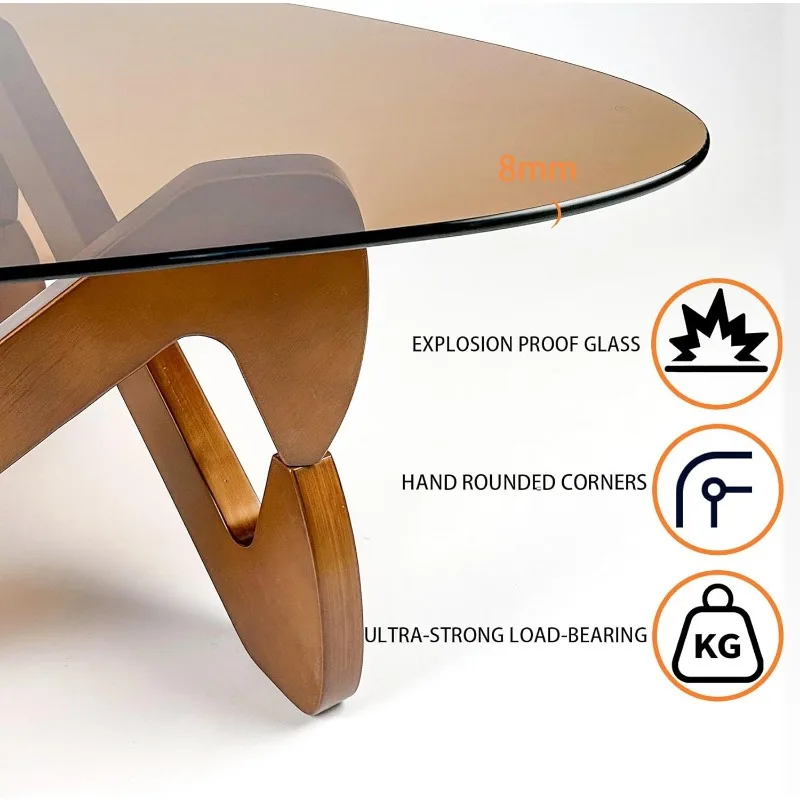
The shape of your tray should complement your table’s geometry. Rectangular trays often work well on rectangular tables, while round or organically shaped trays create interesting contrast on angular tables. For round coffee tables, circular or oval trays maintain the flowing visual line.
Try these tray styling techniques:
– Create a mini-vignette inside a larger tray with 3-5 coordinated items
– Layer a smaller tray atop a larger one for dimension
– Position the tray slightly off-center for a more casual, lived-in look
– Use contrasting colors between your tray and table frame for visual pop
Statement Books: More Than Just Reading Material
Books are styling workhorses for glass coffee tables—they add height, color, and personality while revealing something about your interests. Coffee table books, with their beautiful covers and large formats, are particularly effective styling tools.
When selecting books for your glass coffee table:
- Choose volumes with visually appealing covers and spines
- Coordinate book colors with your overall room palette
- Mix sizes and shapes for visual interest
- Consider the content—books should reflect genuine interests
- Aim for titles that might spark conversation
Effective book arrangement techniques include:
- Stacking: Place books in neat piles of 2-4, largest at the bottom
- Staggering: Create an intentional, casual cascade with books at slight angles
- Bridging: Use books as platforms to elevate smaller objects
- Spreading: Place individual books in different areas of the table
- Color blocking: Arrange books by color for visual impact
For smaller glass tables, limit yourself to 2-3 books to avoid overcrowding. Larger tables can accommodate multiple stacks arranged in conversation with other decorative elements.
Remember that books on glass tables are visible from all sides, so consider whether you want to showcase spines or covers when placing them. You can even change book positions seasonally to refresh your decor without buying new items.
Botanical Elegance: Plants and Florals
Plants and flowers add life, color, and organic texture to glass coffee tables, creating a beautiful contrast against the hard, transparent surface. Botanical elements help soften the overall look while bringing natural beauty into your living space.
Here’s why greenery works so well on glass tables:
- The transparency highlights the intricate structure of plants, especially from underneath
- Living elements create movement and vitality in your arrangement
- Plant shadows cast interesting patterns on surfaces below the table
- Natural colors and textures offset the sleek, manufactured quality of glass
Consider these plant options that work particularly well on coffee tables:
- Succulents: Low-maintenance, sculptural, and available in various sizes
- Air plants: No soil required, unusual shapes, minimal care needed
- Small potted herbs: Functional and fragrant (rosemary, lavender)
- Miniature ferns: Delicate texture with dramatic fronds
- Preserved moss: Zero maintenance with rich texture and color
When selecting containers for your botanicals:
- Choose vessels that complement your table’s frame material
- Consider how the bottom of the pot will look through the glass
- Use containers with interesting textures that contrast with the smooth glass
- Ensure any water-containing vessels have protective bases
For fresh flowers, consider small, low arrangements that don’t obstruct views across the table. Bud vases with single stems can create elegant, minimalist statements without overwhelming the surface.
Sculptural Objects: Adding Artistic Dimension
Decorative objects and sculptures add personality, artistic flair, and dimensional interest to glass coffee tables. These items become focal points and conversation starters while expressing your personal style.
When selecting sculptural elements:
- Choose pieces with interesting silhouettes visible from multiple angles
- Consider how the object looks from below through the glass
- Select materials that complement or intentionally contrast with your table frame
- Think about the visual weight—heavier-looking items should be balanced with lighter elements
Effective materials for glass coffee table objects include:
- Ceramics with interesting glazes or textures
- Natural stones or geodes that play with light
- Metallic elements that reflect and enhance glass’s shine
- Wooden pieces that add organic warmth
- Glass objects that create interesting layered transparency effects
Placement strategies for maximum impact:
- Position sculptural objects at different heights using books or risers
- Create intentional groupings rather than scattered individual pieces
- Consider asymmetrical arrangements for dynamic visual interest
- Use objects with curves to soften the geometric lines of the table
The current trend of incorporating glass coffee tables in style highlights how these transparent surfaces make perfect display platforms for three-dimensional art pieces. Each object placed on a glass table gains prominence, appearing almost gallery-like against the invisible background.
Ambient Elements: Candles and Lighting
Few decorative elements enhance a glass coffee table quite like ambient lighting. Candles and small light sources create magical reflections and shadows, especially in evening hours when the glass surface transforms into a luminous display.
The relationship between glass and flame is particularly special:
- Candlelight reflects and multiplies across the transparent surface
- The flame creates dancing shadows on surfaces beneath the table
- The warm glow contrasts beautifully with the cool feeling of glass
- Light elements create different moods throughout the day
When selecting candles and lighting for your glass table:
- Choose holders that complement your table’s frame material
- Consider candle height—too tall may obstruct conversation
- Select unscented options for dining areas or where food is served
- Look for interesting vessel shapes that enhance the candle’s glow
Safety considerations are especially important with glass surfaces:
- Always use candles in appropriate holders, never directly on glass
- Opt for LED candles if you have concerns about open flames
- Ensure candle holders have protective bases to prevent heat damage
- Position candles away from table edges and flammable materials
Alternative lighting options include:
- Small battery-operated table lamps with interesting bases
- Fairy lights arranged in glass containers
- Crystal or glass objects that capture and refract light
- Himalayan salt lamps for a warm, ambient glow
For those seeking the perfect table to showcase these ambient elements, rectangular coffee tables provide an ideal platform with their generous surface area.
Functional Touches: Marrying Beauty and Utility
A coffee table isn’t just for show—it’s a functional surface in one of the most-used rooms in your home. The key to successful styling is incorporating practical items in an aesthetically pleasing way.
Consider these solutions for common functional items:
- Remote controls: Decorative boxes, small baskets, or dedicated trays keep electronics organized yet accessible
- Coasters: Select designs that coordinate with your decor while protecting the glass surface
- Reading materials: Current magazines can be stacked neatly or fanned for display
- Games: Chess sets, card decks, or puzzles with beautiful designs double as decor
- Small necessities: Matchboxes, hand creams, or other small items can be corralled in attractive containers
When incorporating functional items:
- Choose containers with lids to conceal visual clutter
- Select functional pieces in colors that complement your decor
- Group practical items together rather than scattering them
- Consider the visual weight and balance of necessary objects
- Rotate seasonal reading materials to keep your table feeling current
Remember that one advantage of glass tables is seeing what’s stored on any lower shelves or surfaces. Keep these areas organized with attractive baskets or boxes to maintain the polished look from all angles.
Styling by Design Style: Tailored Approaches
While basic styling principles apply to all glass coffee tables, the specific elements you choose should align with your overall design aesthetic. Here’s how to tailor your approach to different popular design styles:
Modern & Minimalist
- Clean geometric shapes with minimal ornamentation
- Limited color palette (blacks, whites, grays with perhaps one accent color)
- Emphasis on negative space and breathing room
- Materials: metal, glass, lucite, polished stone
- Arrangements: asymmetrical, intentional, with emphasis on clean lines
Rustic & Farmhouse
- Natural, organic materials and textures
- Vintage or antique small objects
- Warm color palette with neutrals and earthy tones
- Materials: weathered wood, terra cotta, woven elements
- Arrangements: casual, slightly imperfect, with layered textures
Coastal & Casual
- Light, airy color palette (blues, whites, sandy neutrals)
- Natural elements like shells, driftwood, or sea glass
- Relaxed, unfussy arrangements
- Materials: rope, whitewashed wood, clear glass
- Arrangements: grouped collections, horizontally oriented
Glam & Luxe
- Metallics (especially gold, brass, or copper accents)
- Reflective surfaces and crystal elements
- Rich, saturated colors or monochromatic palettes
- Materials: mirrored surfaces, velvet, marble, crystal
- Arrangements: symmetrical, deliberate, with statement pieces

Bohemian & Eclectic
- Global-inspired objects and patterns
- Rich, varied color palette with multiple accent colors
- Collected, personal items with stories
- Materials: mixed metals, colorful glass, global textiles
- Arrangements: asymmetrical, abundant, layered
Mid-Century Modern
- Clean lines with organic curves
- Warm wood tones with strategic pops of color
- Functional art pieces that serve a purpose
- Materials: walnut, teak, brass, ceramic
- Arrangements: balanced asymmetry, focus on form and function
For those drawn to the timeless appeal of mid-century aesthetics, exceptional designs nesting coffee tables provide versatile styling options that can be adapted for glass surfaces. The key is to honor the principles of your chosen style while adapting them to work with the unique properties of glass.
Mid-Century Modern End Table Sets of 2, Mid-Century Modern Square Side & End Tables, Mid-Century Modern White Side & End Tables
$348.24 Select options This product has multiple variants. The options may be chosen on the product pageMid-Century Modern Nesting Side & End Tables, Mid-Century Modern Nesting Table Sets, Mid-Century Modern Round Side & End Tables
Price range: $239.35 through $273.06 Select options This product has multiple variants. The options may be chosen on the product pageMid-Century Modern End Table Sets of 2, Mid-Century Modern Walnut Side & End Tables
Price range: $978.89 through $1,957.38 Select options This product has multiple variants. The options may be chosen on the product pageMid-Century Modern Coffee & End Table Sets, Mid-Century Modern Coffee Table Sets, Mid-Century Modern Oval Coffee Tables
Price range: $257.48 through $331.04 Select options This product has multiple variants. The options may be chosen on the product pageMid-Century Modern Glass Top Coffee Tables, Mid-Century Modern Glass Top Side & End Tables
$460.58 Select options This product has multiple variants. The options may be chosen on the product pageMid-Century Modern Glass Top Coffee Tables, Mid-Century Modern Vintage Coffee Tables, Mid-Century Modern Vintage Side & End Tables
$725.36 Select options This product has multiple variants. The options may be chosen on the product page
Layering Masterclass: Creating Depth and Interest
Layering is perhaps the most sophisticated styling technique for glass coffee tables. It creates visual depth, interest, and a curated feel that elevates your decor from basic to professional-looking.
The art of layering involves:
Start with a foundation layer
– Begin with a tray, table runner, or large book as your base
– This creates a defined area and protects the glass surface
– Select a foundation slightly smaller than your table to maintain visible glass edgesAdd medium-height elements
– Place books, boxes, or low vessels atop your foundation
– These create platforms for smaller objects
– Vary heights slightly for natural dimensionIncorporate vertical interest
– Add taller elements like candlesticks, vases, or sculptural pieces
– Position these toward the back or center of the arrangement
– Ensure they don’t obstruct conversation or views across the tableFinish with small accent pieces
– Add tiny elements like small decorative objects or personal items
– These create final visual punctuation points
– Limit these to avoid a cluttered appearanceConsider all dimensions
– Think about how the arrangement appears from all sides
– Remember that with glass, the underside view matters too
– Create intentional negative space between elements
Understanding the differences between various table materials can help refine your approach. Exploring glass vs wood coffee tables highlights why transparent surfaces need more thoughtful layering techniques than their solid counterparts.
Seasonal Refreshes: Keeping Your Style Current
One of the joys of styling a glass coffee table is the ease with which you can update your decor to reflect changing seasons or occasions. Seasonal refreshes keep your living space feeling current and responsive to the world outside.
Core pieces to maintain year-round:
– Neutral trays or surfaces
– Favorite books or meaningful objects
– Quality vessels or containers that work with multiple styles
– Functional elements you use daily
Seasonal adjustments to consider:
Spring:
– Fresh flowers in light, bright colors
– Pastel accents and lighter textiles
– Botanical-themed books or objects
– Clear glass elements that capture increased natural light
Summer:
– Coastal elements like shells or blue glass
– Travel books or vacation mementos
– Lighter, brighter color accents
– Natural materials like raffia or lightweight woven elements
Fall:
– Warmer color palette with amber, rust, and deep greens
– Natural elements like small gourds or preserved leaves
– Textured metals and richer wood tones
– Candles with autumn-inspired vessels
Winter:
– Metallic accents that reflect holiday lighting
– Deeper, richer colors and textures
– Evergreen elements or winter botanicals
– Extra candles for increased ambient lighting
For a cohesive look throughout your space, consider how your coffee table styling relates to other accent tables. Mid-century modern coffee table sets can help create a coordinated approach across different surfaces in your home.
Beyond the Table: Creating a Cohesive Living Space
Your glass coffee table doesn’t exist in isolation—it’s part of a larger living environment. Creating harmony between your table styling and the surrounding space ensures a cohesive, thoughtful appearance.
Consider these connections when styling your glass coffee table:
- Color Echoing: Pull colors from your room’s existing palette (pillows, artwork, rugs) into your table decor
- Material Consistency: Repeat materials from your furniture (wood tones, metal finishes) in your table accessories
- Style Alignment: Ensure your table decor reflects the same design aesthetic as the rest of your space
- Visual Balance: Create relationships between the coffee table and other surfaces like side tables or console tables
The area surrounding your coffee table matters too:
- Position seating at a comfortable distance (about 18 inches) from the table edge
- Consider how a rug beneath the table defines the conversation area
- Ensure table height complements seating height (generally 1-2 inches lower than seating)
- Think about traffic flow around the table when deciding on placement and styling
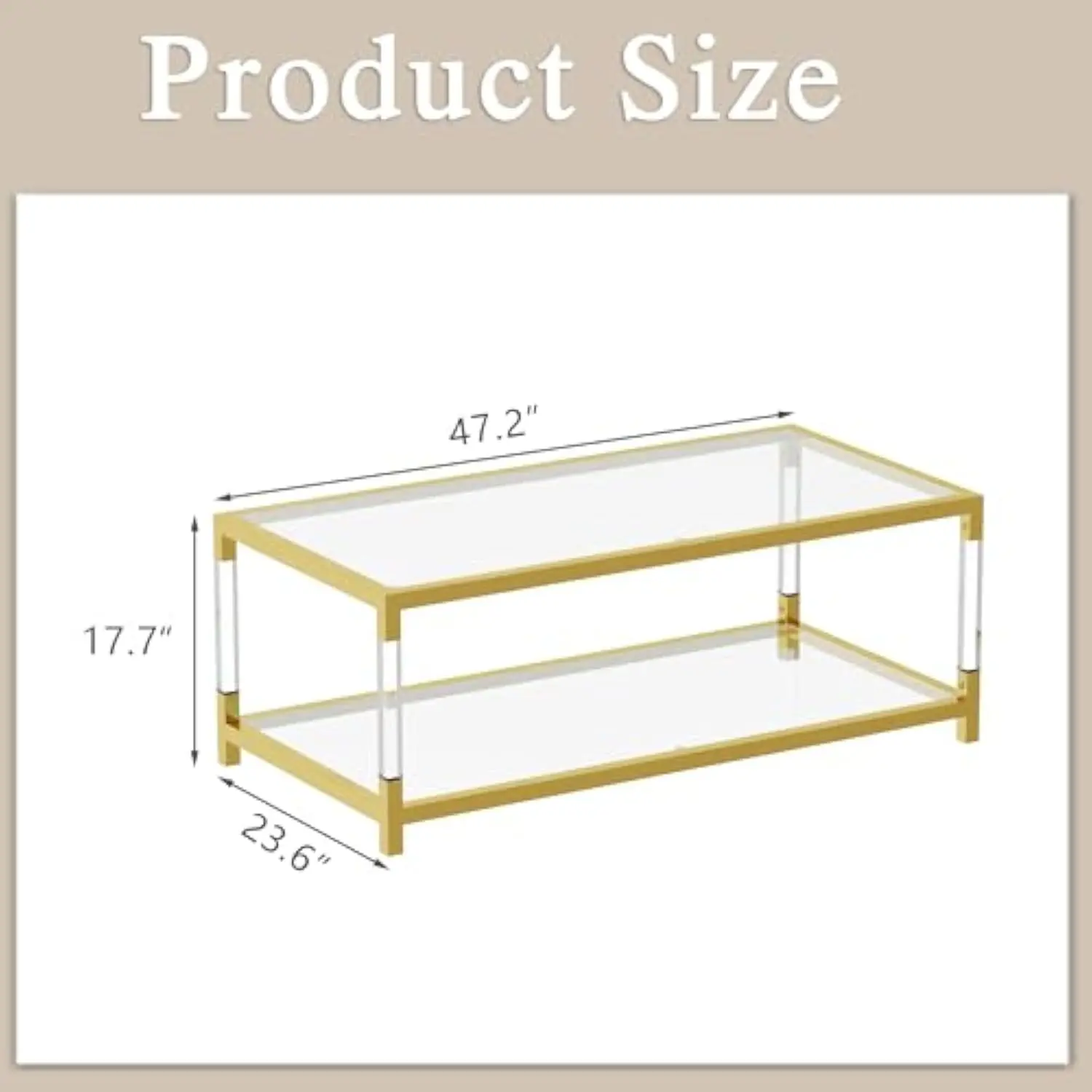
For a truly coordinated look, consider how your coffee table styling relates to other accent pieces. Mid-century modern side end tables can complement your coffee table while extending your design vision throughout the space.
Common Styling Mistakes to Avoid
Even with the best intentions, certain styling missteps can undermine the beauty of your glass coffee table. Here are the most common errors to avoid:
Overcrowding the surface: Perhaps the most frequent mistake is placing too many items on your table. Glass tables need breathing room to showcase their transparency. Limit your styling to what’s truly necessary and visually impactful.
Ignoring scale: Items that are too large overwhelm the table, while pieces that are too small look insignificant. Choose decorative elements proportional to your table’s dimensions.
Blocking conversation: Tall objects placed in the center of the table can create visual and conversational barriers. Position taller items toward the edges or ensure they’re thin enough to see through.
Neglecting the view from below: Unlike solid tables, glass surfaces reveal what’s underneath. Consider how container bottoms, table bases, and the floor below affect your overall aesthetic.
Using inappropriate materials: Items that can scratch glass (unglazed ceramics, rough stone) or leave marks (certain metals) should be placed on protective surfaces rather than directly on the glass.
Creating a flat arrangement: Styling everything at the same height creates a visually uninteresting display. Vary heights for dimensional appeal.
Disregarding function: A beautiful but impractical arrangement will quickly become frustrating. Ensure you maintain usable space for drinks, remote controls, or other necessities.
Understanding proper care is also essential. Following glass coffee table safety tips will help maintain your table’s beauty while preventing damage from improper decorative choices.
Expert Styling Tips: Professional Insights
Take your glass coffee table styling to the next level with these designer-approved techniques:
- The photographer’s trick: Style in odd-numbered groups, with larger items at the back and smaller in front, creating depth like a professional photo shoot
- The triangle technique: Arrange items to create invisible triangles within your display for natural visual flow
- The 60-30-10 color rule: Use 60% of a dominant color, 30% of a secondary color, and 10% of an accent color
- The texture ratio: Include equal parts hard surfaces (metal, glass), medium textures (wood, ceramic), and soft elements (books, plants)
- The styling formula: One horizontal element (tray, books) + one sculptural item + one organic element (plant) = foolproof arrangement
Maintenance tips to keep your styled glass table looking pristine:
- Clean the glass weekly with a mixture of equal parts white vinegar and water
- Use microfiber cloths to prevent scratches and lint
- Apply glass protectant to reduce fingerprints and smudges
- Rotate decorative items regularly to prevent sun fading
- Place felt pads under all decorative objects to prevent scratches
Different glass finishes require different approaches:
– Clear glass offers classic transparency and maximum light reflection
– Frosted glass diffuses light and creates a softer appearance
– Tinted glass adds color and can complement specific decor palettes
– Textured glass adds visual interest but requires simpler styling
For additional styling techniques that work beautifully on glass surfaces, styling rectangular coffee tables offers complementary advice that can be adapted for transparent tables.
Your Signature Style: Making It Personal
While styling principles provide a helpful framework, the most compelling glass coffee table arrangements reflect personal taste and experiences. Your table should tell your unique story through thoughtfully selected items.
Consider incorporating these personal elements:
- A small object from your travels that evokes meaningful memories
- Books that genuinely interest you and reflect your passions
- Family heirlooms or vintage finds with personal significance
- Artisan-made pieces that support creators you admire
- Natural elements collected from places that matter to you
As you develop your styling confidence, remember that the most inspiring spaces evolve beyond strict rules. Once you understand the fundamentals, you can begin to:
- Experiment with unexpected combinations
- Develop signature color palettes that feel uniquely yours
- Create arrangements that prompt conversations about things you love
- Rotate personal collections that showcase different aspects of your interests
- Trust your eye for what feels balanced and beautiful
Ask yourself these questions when adding personal items:
– Does this piece bring me joy or spark a meaningful memory?
– Does it contribute aesthetically to the overall arrangement?
– Does it create visual interest or start conversations?
– Does it feel authentic to who I am and how I live?
Your glass coffee table offers a unique opportunity to display what matters to you against a backdrop that quite literally elevates and illuminates your choices. By thoughtfully curating this central surface, you create a living space that’s not just stylish, but deeply personal and welcoming.

